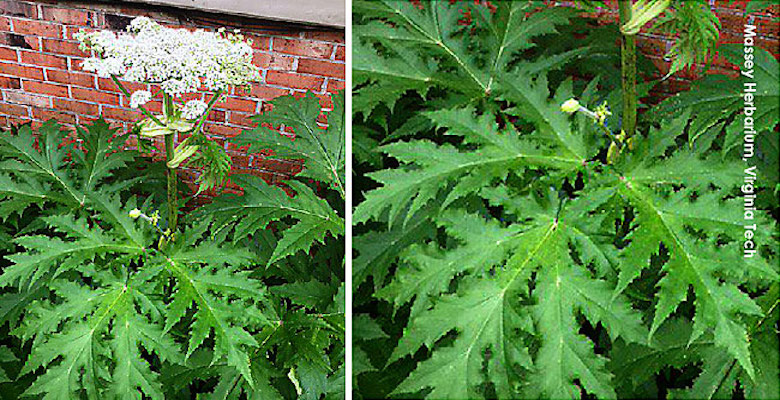With the warmer weather and summer vacay in full swing, parents are rejoicing that they can send their kids outside to play,
That doesn’t mean that they are out of harms way and t there is a particular plant that parents and children should be aware of as the effects are enough to ruin your summer fun.
The plant is known as the Giant Hogweed, which fis originally from Southwest Asia but began sprouting in New York a number of years ago. And now it is turning up in parts of Virginia and agricultural experts are concerned.
What is so harmful about the giant hogweed?
The plant contains a toxic sap which not only has the ability to cause blistering burns, but in certain instances even blindness.
The plant doesn’t look like it can cause any harm either.
Today.com describes it as having a hollow, rigid stem covered in purple splotches with thick, white hairs (this is the section that contain the toxic sap).
The plant can grow between 8 and 15 feet tall, with white flowers which bloom into an umbrella-like shape.
The toxic sap of the plant doesn’t just ooze out of the plant, it can actually splatter.
When the skin makes contact with the sap and normal sun exposure, it can form painful blisters that may also cause scars.
The sap also has the ability to make your skin more sensitive to the sun for years after exposure to the plant.
“Be careful if you encounter this invasive plant! The clear watery sap of Giant Hogweed contains toxins that can cause dermatitis (inflammation of the skin). It can cause burns if you get the sap on your skin and the skin is then exposed to sunlight.
pic.twitter.com/zg2XB30gtN
— Invading Species (@invspecies) June 14, 2018
And if you have ever made contact with poison ivy, you know this description is not for the faint hearted.
To keep your children protected this summer, remind them not to try to pick or even touch any plants while they are outside.
Show your children photos of the giant hogweed so that they can easily identify the plant. Explain the potential dangers and the continuing effects that it can have if the sap comes in contact with their skin.
